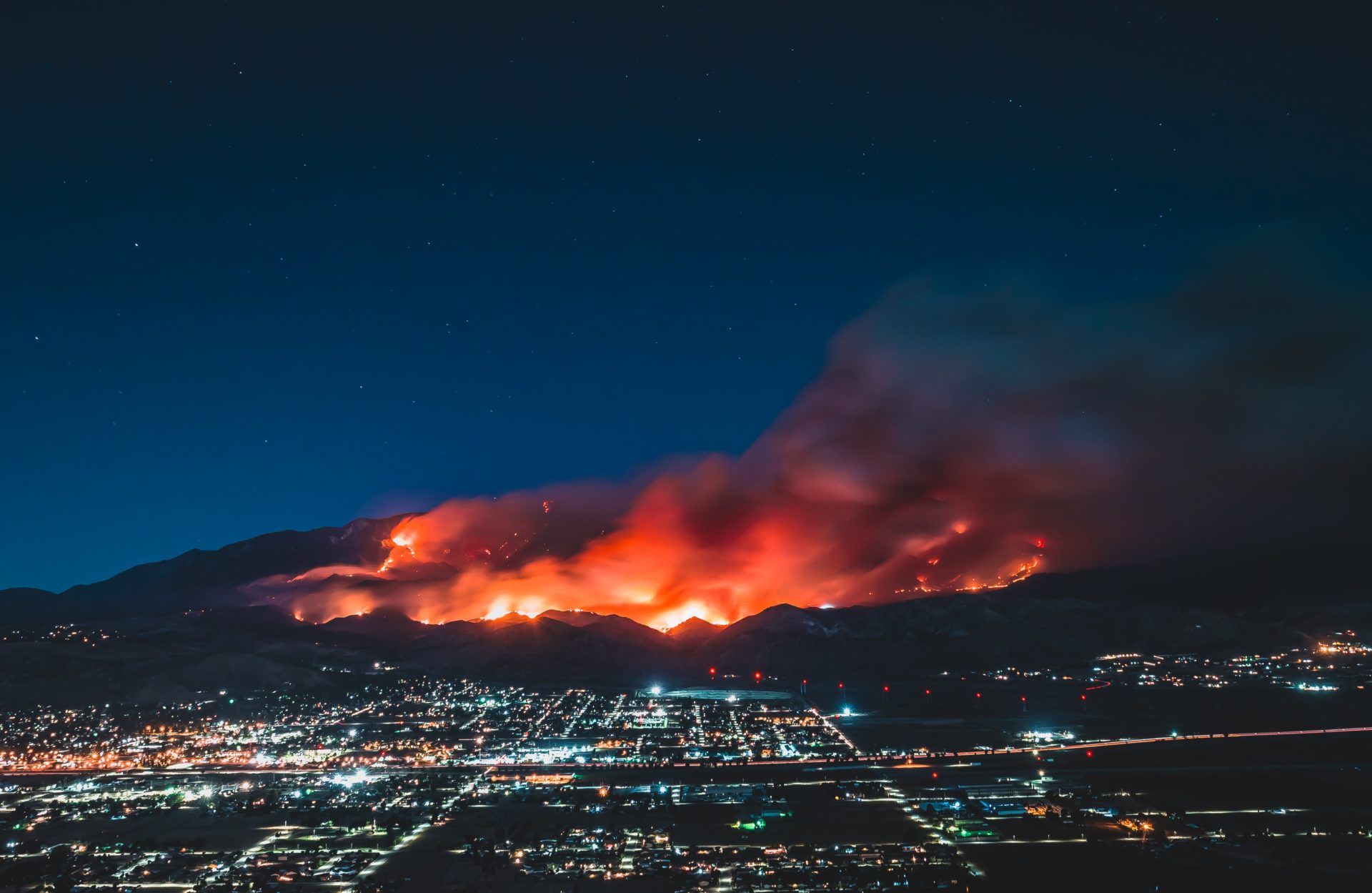A Retrospective on Wildfire Regimes, Human Activities, and Population
Written by Alex Casey, Communications Fellow | Published: August 5, 2021
I had never heard of a “fire season” before coming to Northern California. I grew up in Massachusetts, and my initial understanding of the Golden State’s weather patterns was similar to that of the popular Mark Twain quote: “The coldest winter I ever spent was a summer in San Francisco.” Days up north were less predictable than sunny days in the south, but there was an element of consistency. The sun would always rise, barely burning off the Bay’s fog, falling into its quotidian rhythm of sixty degree days and rain-stained skies.
The image that California sells to the world is romantic, but its manufactured dream is accompanied by a fiery undercurrent. This summer is on track to be worse than last for wildfires and their respective impacts on communities in the U.S. Low rainfall, fewer shrubs, drier summers, and higher population densities have cumulatively contributed to 97 large fires across 12 states, burning 1,868,204 acres in 2021 alone.
California’s climate adaptation measures have not yet caught up to its exported dreams of abundance. Some 40 percent of the nation’s water-intensive crops are grown in a desert with lowering groundwater tables and sinking lands. Depending on the year, 80 percent of California’s water goes to agriculture. The drought has reached such dire levels that the state is considering barring thousands of Central Valley farmers from using river and stream water for crop irrigation. According to the U.S. drought monitor, 95 percent of the state is in some sort of drought. Aqueducts are drying, 300,000 people are added to the state’s population every year, and the same towns are burning year after year.
The same communities are also enduring the hardest hitting impacts from wildfires. Low income Black people, Indigenous people, and other people of color experience 50 percent greater vulnerability to wildfires than other communities. Indigenous people are six times more likely than other groups to live in areas prone to wildfires and to face disproportionate impacts on water quality, biodiversity, and human health. Undocumented farm workers in California must often work through toxic air quality conditions, sometimes without masks.
Moreover, Californians are building, rebuilding, and sprawling into fire prone communities due to rising housing prices in urban areas. Roughly 30 percent of the state’s population lives in a wildland-urban interface (WUI), where fires are more frequent, kindling more abundant. By 2050, 645,000 new houses in California will be built in “very high” wildfire severity zones due in part to population growth. Power grids will expand to accommodate growing communities.
Wildfires are endemic to California’s history of land management. For 8,000 years, Indigenous people used it to set life-giving fire to undergrowth for ecological restoration, renewal, protection, and general ecosystem health. When Native Americans were forcibly removed and displaced in the early 1900s, fires were suppressed and eventually made illegal. What resulted was a massive build-up of brush, grasses, and undergrowth kindling that instigated catastrophic wildfire behavior. Colonization and the belief in manifest destiny altered these natural ecological processes, so they’d happen more frequently and unintentionally.
 Global warming undoubtedly creates more flammable conditions. Climate models show that as temperatures rise, some of California’s forests will continue to grow more arid. Extreme droughts will be followed by potent periods of rain, prompting the growth of thick underbrush, which becomes flammable kindling in proceeding droughts.
Global warming undoubtedly creates more flammable conditions. Climate models show that as temperatures rise, some of California’s forests will continue to grow more arid. Extreme droughts will be followed by potent periods of rain, prompting the growth of thick underbrush, which becomes flammable kindling in proceeding droughts.
But ongoing human activities and demographic trends like population growth are also responsible for increased incidence of ignition and fires. Today, wind-dominated fires in California have an almost 100 percent rate of ignition by humans. Despite a recent dip in the rate of population growth, the state has grown by 6 million people since 2000, with 300,000 more residents added annually. In Southern California, where chaparral shrublands are not adapted to burn at the rates of the northern mountain conifer forests, there has been an “unprecedented” fire frequency in the past century. Ecosystems that once burned every 100 to 130 years are now burning every 10 to 20 years. How people move, as well as how they grow, impacts ecosystems. 
California is currently experiencing its largest fire this year, and demands for development, goods and services, and natural resources are increasing everywhere, driving more activities in forest areas along the Pacific Coast. More than ever, we need integrated, rights-based human solutions to human-caused problems.
It didn’t take long before I grew accustomed to classes canceled from smoke instead of blizzards, placing an N-95 mask over my face instead of tucking fleece pants into snow boots, and my roommate’s choked, asthmatic cough replacing those refreshing gulps of crisp, winter air. As is the case with everyone who moves to a new habitat, or endures a global pandemic in an old habitat, some form of adaptation ensues.
Wildfire regimes are here to stay. What was once a tool of resource management has become a tool of uncontrolled disturbance due in part to long histories of global warming and suppressed Indigenous knowledge. There is no stopping what has been done. But governmentally, systemically, and individually: we have the ability to change how we adapt to these situations, and thus change our outcomes. Curbing our current emissions, reducing growth in wildfire areas, supporting vulnerable, isolated mountain towns, limiting home building, camp fires, and smoking in the wildland-urban interface — are all important ways to adapt. Integrated adaptation strategies and solutions to our current, most pressing, climate crises, are how we persist and make our way back to some semblance of that “coldest winter.”

